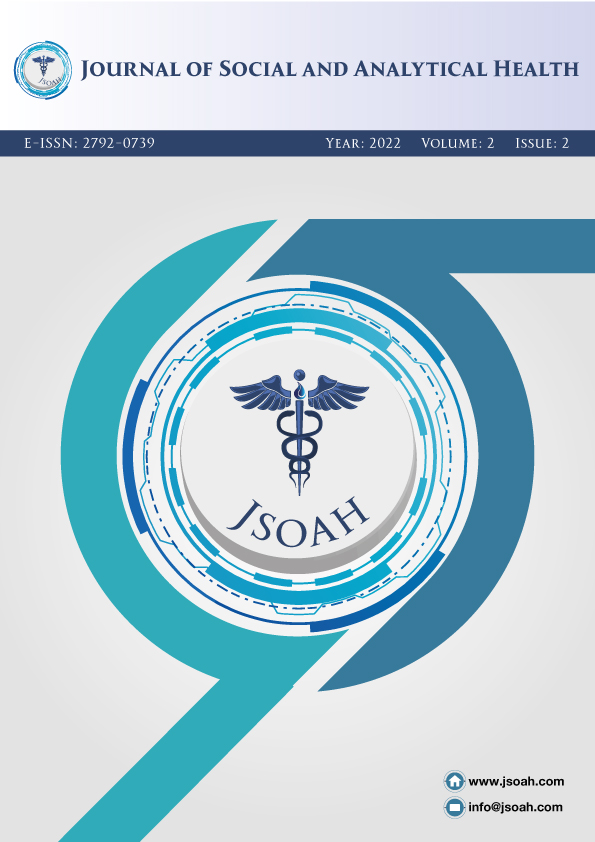Ligamentum favum hipertrofisinde sitokin gen ekspresyonu
DOI:
https://doi.org/10.5281/zenodo.6768965Anahtar Kelimeler:
Lomber Spinal Kanal Stenozu, Ligamentum Flavum Hipertrofisi, Spinal Stenoz, Sitokin, FibrozÖzet
Giriş: Lomber spinal kanal darlığı, yaşlılarda önemli bir yaralanma nedenidir ve 65 yaş üstü hastalarda spinal cerrahinin en önemli nedeni olan bir hastalıktır. Ligamentum flavum hipertrofisi lomber spinal kanal darlığının patogenezinde kritik rol oynar. İnflamatuar ajanlar, ligamentum flavum hipertrofisini indükler ve skar dokusu oluşumunu arttırır. Lomber spinal stenozların yaygınlığına rağmen günümüzde evrensel bir tanımı yoktur ve genel kabul görmüş radyolojik tanı kriterleri eksiktir.
Gereç-Yöntem: Çalışmamızda çalışmamızda lomber spinal kanal stenozu tanısı alan hastalardan 25 hipertrofik LF dokusu örneği ile vaka grubu, lomber disk hernisi nedeniyle ameliyat edilen hastalardan alınan 25 örnek ile control grubu oluşturuldu. Numuneler histolojik çalışma için incelendi. Lomber spinal kanal darlığı ve kontrol gruplarında inflamatuar sitokin genlerinin ekspresyonu semikantitatif RT-PCR yöntemi ile araştırıldı.
Bulgular: Hem lomber spinal kanal stenozunda hem de kontrol gruplarında sitokinler tespi edildi. Lomber spinal kanal darlığı ve kontrol grupları arasında incelenen sitokinler açısından istatistiksel olarak anlamlı fark bulunamadı. Ancak lomber spinal kanal darlığı grubunda düşük IL-1 beta seviyeleri bulundu.
Sonuç: Spinal kanal darlığı, yaşlı hastalarda ağrının ve fonksiyonel kapasitenin azalmasının en önemli nedenidir. Bu nedenle, etkili terapötik stratejilere ihtiyaç vardır. İlaç direnci fibrotik dokuda yaygındır. Antifibrotik ilaçlar, hedefe yönelik bir ilaç geliştirme stratejisinin önemli bir parçası olabilir.
Referanslar
Genevay S, Atlas SJ. Lumbar spinal stenosis. Best Pract Res Clin Rheumatol. 2010;24(2):253–265.
Lee BH, Moon S-H, Suk K-S, Kim H-S, Yang J-H, Lee H-M. Lumbar Spinal Stenosis: Pathophysiology and Treatment Principle: A Narrative Review. Asian Spine J. 2020;14(5):682–693.
Yabe Y, Hagiwara Y, Ando A, Tsuchiya M, Minowa T, Takemura T, et al. Chondrogenic and fibrotic process in the ligamentum flavum of patients with lumbar spinal canal stenosis. Spine (Phila Pa 1976). 2015;40(7):429–435.
Nakamura T, Okada T, Endo M, Nakamura T, Oike Y, Mizuta H. Angiopoietin-like protein 2 promotes inflammatory conditions in the ligamentum flavum in the pathogenesis of lumbar spinal canal stenosis by activating interleukin-6 expression. Eur Spine J. 2015;24(9):2001–2009.
Hu W, Kan S, Liu G, Cao Z, Zhu R. The expression of P16 and S100 associated with elastin degradation and fibrosis of the Ligamentum Flavum hypertrophy. BMC Musculoskelet Disord. 2019;20(1):458.
Kany S, Vollrath JT, Relja B. Cytokines in Inflammatory Disease. Int J Mol Sci. 2019;20(23):6008.
Ramani T, Auletta CS, Weinstock D, Mounho-Zamora B, Ryan PC, Salcedo TW, Bannish G. Cytokines: The Good, the Bad, and the Deadly. Int J Toxicol. 2015;34(4):355-365.
Kosaka H, Sairyo K, Biyani A, Leaman D, Yeasting R, Higashino K, et al. Pathomechanism of loss of elasticity and hypertrophy of lumbar ligamentum flavum in elderly patients with lumbar spinal canal stenosis. Spine (Phila Pa 1976). 2007;32(25):2805–2811.
Ruiz-Fernández C, Francisco V, Pino J, Mera A, González-Gay MA, Gómez R, et al. Molecular Relationships among Obesity, Inflammation and Intervertebral Disc Degeneration: Are Adipokines the Common Link? Int J Mol Sci. 2019;20(8):2030.
Munns JJ, Lee JYB, Espinoza Orías AA, Takatori R, Andersson GBJ, An HS, et al. Ligamentum flavum hypertrophy in asymptomatic and chronic low back pain subjects. PLoS One. 2015;10(5):e0128321.
Cheung PWH, Tam V, Leung VYL, Samartzis D, Cheung KM-C, Luk KD-K, et al. The paradoxical relationship between ligamentum flavum hypertrophy and developmental lumbar spinal stenosis. Scoliosis Spinal Disord [Internet]. 2016;11(1):26.
Karabekir HS, Yildizhan A, Atar EK, Yaycioglu S, Gocmen-Mas N, Yazici C. Effect of ligamenta flava hypertrophy on lumbar disc herniation with contralateral symptoms and signs: a clinical and morphometric study. Arch Med Sci. 2010;6(4):617–622.
Zhong Z-M, Zha D-S, Xiao W-D, Wu S-H, Wu Q, Zhang Y, et al. Hypertrophy of ligamentum flavum in lumbar spine stenosis associated with the increased expression of connective tissue growth factor. J Orthop Res. 2011;29(10):1592–1597.
Nakatani T, Marui T, Hitora T, Doita M, Nishida K, Kurosaka M. Mechanical stretching force promotes collagen synthesis by cultured cells from human ligamentum flavum via transforming growth factor-beta1. J Orthop Res Off Publ Orthop Res Soc. 2002;20(6):1380–1386.
Axel W, Peter W, Michael K. Interleukin-1β (IL-1β) Processing Pathway. Sci Signal. 2010 Jan 19;3(105):cm2.
Lopez-Castejon G, Brough D. Understanding the mechanism of IL-1β secretion. Cytokine Growth Factor Rev. 2011;22(4):189–195.
Wang Y, Che M, Xin J, Zheng Z, Li J, Zhang S. The role of IL-1β and TNF-α in intervertebral disc degeneration. Biomed Pharmacother. 2020;131:110660.
Maher C, Underwood M, Buchbinder R. Non-specific low back pain. Lancet. 2017;389(10070):736–747.
Kadow T, Sowa G, Vo N, Kang JD. Molecular basis of intervertebral disc degeneration and herniations: what are the important translational questions? Clin Orthop Relat Res. 2015;473(6):1903–1912.
Kim B-J, Hur JW, Park JS, Kim JH, Kwon T-H, Park Y-K, et al. Expression of matrix metalloproteinase-2 and -9 in human ligamentum flavum cells treated with tumor necrosis factor-α and interleukin-1β. J Neurosurg Spine. 2016;24(3):428–435.
Wang B, Gao C, Zhang P, Sun W, Zhang J, Gao J. The increased motion of lumbar induces ligamentum flavum hypertrophy in a rat model. BMC Musculoskelet Disord. 2021;22(1):334.
Chao Y-H, Yang H-S, Sun M-G, Sun J-S, Chen M-H. Elastin-derived peptides induce inflammatory responses through the activation of NF-κB in human ligamentum flavum cells. Connect Tissue Res. 2012;53(5):407–414.
İndir
Yayınlanmış
Nasıl Atıf Yapılır
Sayı
Bölüm
Lisans
Telif Hakkı (c) 2022 Journal of Social and Analytical Health

Bu çalışma Creative Commons Attribution-NonCommercial 4.0 International License ile lisanslanmıştır.


